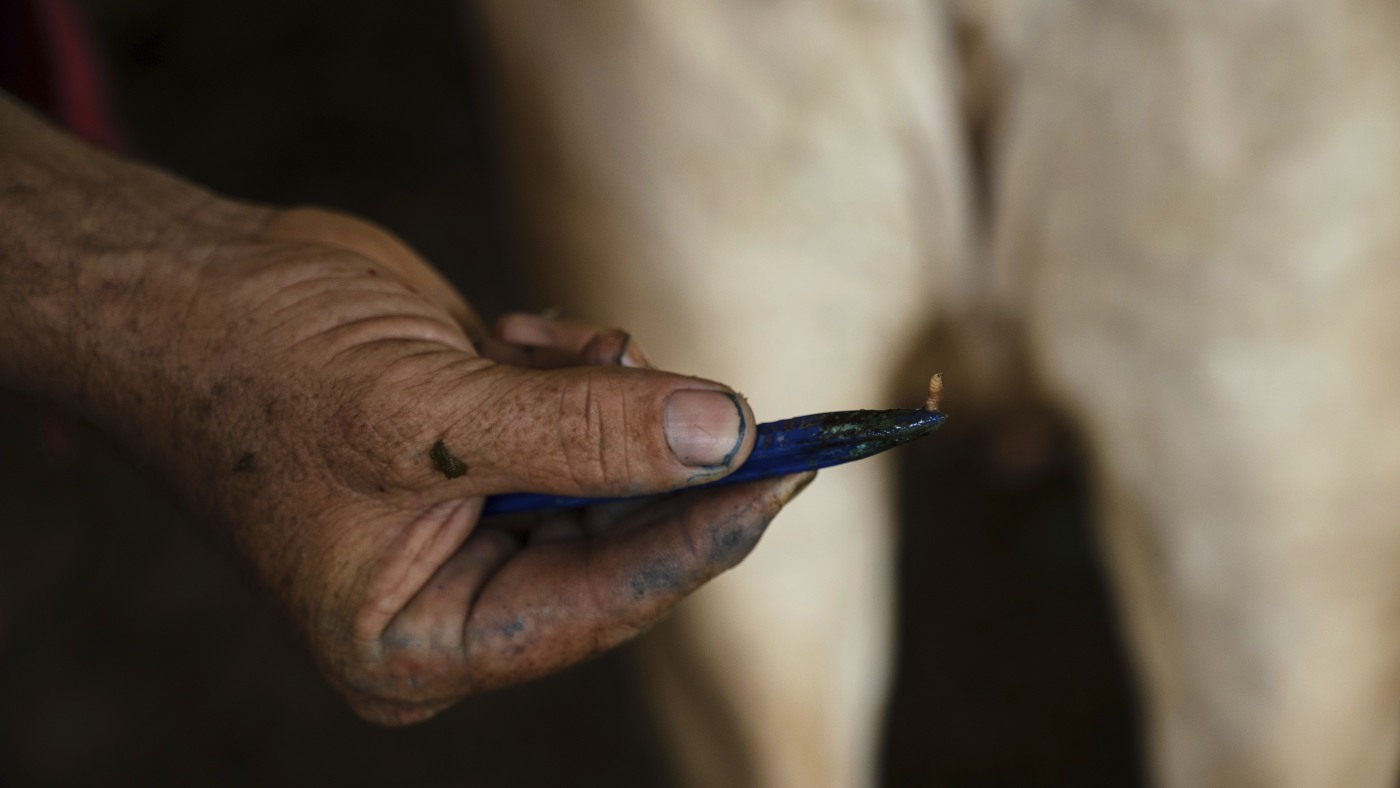The Screwworm’s Shadow: A Crisis for Mexican Ranchers
The Enemy Within: Understanding the Screwworm
The New World screwworm fly (*Cochliomyia hominivorax*) is a formidable adversary for Mexican ranchers. Unlike typical blowflies that feed on decaying matter, the screwworm targets living tissue, laying its eggs in open wounds on warm-blooded animals. Once hatched, the larvae burrow into the flesh, creating festering wounds that cause extreme pain, weight loss, and reduced productivity in livestock. In severe cases, untreated infestations can lead to death. The economic impact is devastating, with ranchers facing decreased livestock value, increased veterinary costs, and trade restrictions.
Ground Zero: Chiapas and the Southern Front
The southern state of Chiapas, bordering Guatemala, has become the epicenter of the recent screwworm outbreak. This region’s lush landscapes and vibrant culture are also crucial for cattle raising, making the rapid spread of the parasite particularly alarming. The proximity to Guatemala, where the screwworm persists, exacerbates the problem. Cross-border movement of animals, both legal and illegal, can reintroduce the parasite into areas previously cleared through the sterile insect technique (SIT). This highlights the need for coordinated regional efforts to combat the screwworm effectively.
The Sterile Insect Technique: A Double-Edged Sword
The sterile insect technique (SIT) has been a cornerstone of screwworm control. This method involves rearing large numbers of screwworm flies, sterilizing them with radiation, and releasing them into the wild. The sterile males mate with wild females, resulting in infertile eggs and a gradual reduction in the screwworm population. While SIT has been highly successful in eradicating the screwworm from the United States, Mexico, and parts of Central America, maintaining this success requires constant vigilance and ongoing investment.
The re-emergence of the screwworm in Mexico underscores the limitations of SIT as a standalone solution. Factors such as the cost of rearing and releasing sterile flies, logistical challenges in reaching remote areas, and the potential for re-infestation from neighboring countries can all undermine the effectiveness of the program. Therefore, a multi-faceted approach is necessary to combat the screwworm effectively.
The Rancher’s Burden: Rising Costs and Limited Support
Ranchers in southern Mexico are facing a perfect storm of challenges. In addition to the direct impact of the screwworm on their livestock, they are also grappling with rising costs for veterinary care, insecticides, and labor. Many ranchers, particularly smallholders, lack the resources to implement effective prevention and treatment strategies. Limited government support further exacerbates the situation. While some programs exist to provide ranchers with assistance, access to these resources can be uneven, and the level of support may be insufficient to meet the scale of the problem. Ranchers often feel abandoned and left to fend for themselves against a relentless enemy.
The Trade Barrier: U.S. Restrictions and Economic Fallout
The screwworm outbreak has had significant repercussions for Mexican cattle exports. The United States, a major trading partner, has imposed restrictions on the import of Mexican cattle to prevent the parasite from spreading north. These restrictions can have a devastating impact on the Mexican cattle industry, leading to reduced sales, lower prices, and job losses. The trade barrier highlights the interconnectedness of agricultural economies and the importance of international cooperation in combating animal diseases. Effective surveillance, control, and eradication programs are essential not only for protecting livestock but also for maintaining trade relationships and ensuring food security.
Building a Fortress: Prevention and Control Strategies
Combating the screwworm requires a multi-pronged approach that combines prevention, treatment, and surveillance. Ranchers must be vigilant in inspecting their animals for wounds and treating them promptly with insecticides. Wound management is crucial to prevent screwworm infestations. Simple measures, such as applying wound dressings and controlling flies around livestock facilities, can significantly reduce the risk. Vaccination, when available, can also play a role in preventing screwworm infestations. Vaccines can stimulate the animal’s immune system to fight off the parasite, reducing the severity of the infection and limiting the fly’s ability to reproduce.
The Power of Innovation: New Technologies and Research
Innovation is key to developing more effective and sustainable screwworm control strategies. Researchers are exploring new technologies, such as improved trapping methods, biological control agents, and advanced diagnostic tools, to better understand and combat the parasite. Geographic Information Systems (GIS) and remote sensing technologies can be used to map screwworm outbreaks, identify high-risk areas, and optimize control efforts. These tools can help ranchers and government agencies to target their resources more effectively and prevent the spread of the parasite.
A Call to Action: Collaboration and Sustainable Solutions
The battle against the screwworm is far from over. Success will require a concerted effort from ranchers, veterinarians, government agencies, and researchers. Collaboration is essential to share knowledge, coordinate control efforts, and mobilize resources. Sustainable solutions are needed to address the root causes of the screwworm outbreak and prevent future re-emergence. This includes strengthening veterinary services, improving animal health management practices, and promoting responsible trade in livestock.
The Future of Ranching: Resilience and Hope
The resurgence of the screwworm in Mexico is a stark reminder of the challenges facing ranchers in a changing world. Climate change, globalization, and emerging diseases are all posing new threats to livestock production. However, the resilience and determination of Mexican ranchers offer a glimmer of hope. By embracing innovation, working together, and adopting sustainable practices, they can overcome this challenge and secure a brighter future for their industry and their communities. The battle against the screwworm is not just about protecting livestock; it is about safeguarding the livelihoods and cultural heritage of the ranchers who call southern Mexico home.

